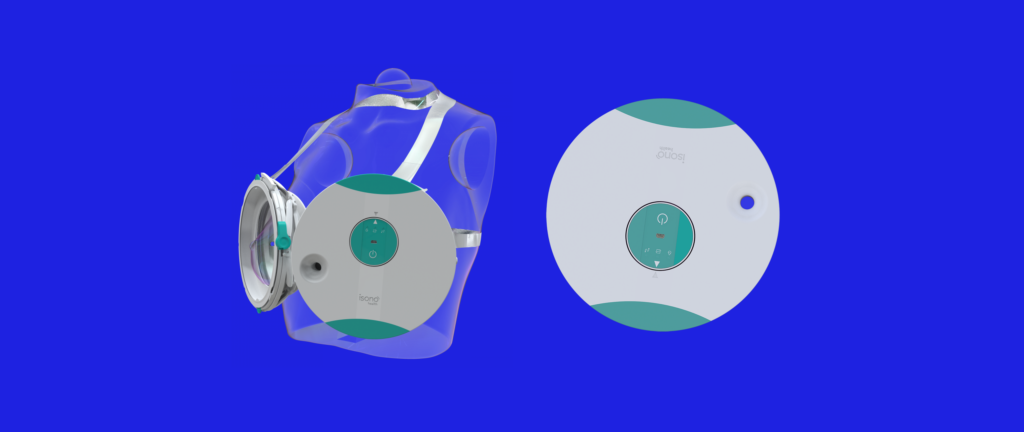For the last 6 weeks, we have been working with iSono Health, one of our 2024 Grants winners. The insights here have been acquired after researching and deep diving with them on breast cancer detection and the role of AI and computer vision in early detection.
Later studies have shown that approximately 1 in 8 women in the U.S. will develop invasive breast cancer during their lifetime (2024, American Cancer Society). And although overall breast cancer mortality has declined by 44% since 1989, in recent years there has been an increase in younger women. From 2012 to 2021, diagnoses increased by 1.4% annually in patients under 50 (Swartz, 2024).
As in any case when facing cancer, early detection is key to saving a patient’s life. Recent metrics found that the 5-year survival rate for localized breast cancer (Stage I) is 99%; however, that percentage drops to 30% when diagnosed at Stage IV (metastatic) (ACS, 2024).
Mammography vs. ultrasound
Currently, in the US, mammography is known as the gold standard routine for breast cancer screening. However, in recent years, ultrasound has become an extended tool to improve detection and early treatment. Although mammography has an 87% sensitivity in the general population, when the density of the breast increases, it can drop to 47–64% in women with dense tissue.
There are some main benefits and differentiators between mammography and ultrasound. First, ultrasound is radiation-free, so in cases like pregnant women, it is safe to use. Second, it’s portable, making it very easy to use and move around — reaching people in rural areas who may not have access to this kind of exam. And last, it is totally painless for the patients.
Although, for now, ultrasound cannot be used as a primary screening tool, it has proven to be an excellent addition to early cancer detection, and when combined with mammography, can find 2–4 extra cancers per 1,000 women.
Ultrasound: democratizing breast cancer diagnosis
In addition to the above, in the USA, ultrasound technology has become a crucial tool for diagnosis — especially effective for younger women and people with dense breast tissue, situations where mammograms alone aren’t enough. One study showed that when combined with mammography, ultrasound detected 96% of hidden breast cancers in women with dense breasts, compared to 74% with just mammography (NLM, 2023).
Some of the biggest advantages of ultrasound are its cost-effectiveness and wide accessibility when prioritized, making it easier for low-income women and people who live in rural areas to receive a diagnosis.
Our grantee winner iSono Health designed and built an ultrasound device: Atusa. For iSono, there is one key motivator: to make sure no woman ever dies from breast cancer through early detection. Atusa is the world’s first AI-driven portable and automated 3D breast ultrasound scanner for breast cancer detection, with two key benefits: fast and accurate.

During these weeks, we have been talking with some SMEs (Subject Matter Experts) about the topic and the importance for radiologists, patients, and the healthcare system to start implementing new technologies in the battle against breast cancer.
Part of the value proposition of ATUSA is the technology they use: ABUS (Automated Breast Ultrasound System). This technology allows experts to take a fully automated, standardized breast scan, generating 3D images — different from the 2D ones in traditional ultrasound. The benefits are not only in image quality, but also in operator independence, as it ensures consistent image acquisition without requiring technical expertise. In addition, ABUS has proven to be highly effective for dense breast tissue. Combined with mammography, it can increase cancer detection by 35%.
AI in breast cancer
During our investigation and work with iSono, we have been implementing improvements around their AI and UX workstreams. AI has become an impressive and very helpful tool around the world, especially in healthcare. In breast cancer detection and ultrasound, it has been shown to improve accuracy and help reduce missed diagnoses. One of our key objectives with this project is to research and analyze how AI can step in to analyze ultrasound images more consistently by highlighting suspicious lesions and even classifying them (benign vs. malignant).
Another key advantage? It speeds up diagnosis time by automatically identifying breast lesions, measuring them, and even generating preliminary reports. In places where the patient flow is very high or there are not enough specialists, AI can help speed up diagnoses without sacrificing quality.
Lastly, like in iSono’s device, ATUSA, AI is being integrated into portable handheld ultrasound devices, which makes screening more accessible in rural or mobile settings — helping more patients and experts.
However, we know that there are still some challenges when talking about AI and health. Some of them are:
- Bias in the training data — this can cause the models to perform unequally across diverse patient groups.
- Regulatory approvals — in the USA, FDA approval is required to use AI, and most tools are still being evaluated in clinical trials. ATUSA is the first of its kind and has been approved by the FDA.
- Trust and integration — for some radiologists, there is still skepticism around this new technology, and they are in the process of developing trust in AI as a decision-making assistant. In addition, hospitals need infrastructure to support these devices and the specialists using AI.
Computer vision, AI and cancer detection
We can firmly say that AI and computer vision are here to transform our context — especially breast cancer detection. For instance, it has become a way to assist radiologists; however, it has also changed the speed, accuracy, and accessibility of early detection.
We can start by highlighting how it has improved accuracy: AI algorithms — especially those powered by computer vision — can be trained with millions of medical images to recognize patterns, anomalies, and early lesions that may be missed by doctors. Recent experiments showed that Google Health’s AI model reached a 94.5% accuracy rate when spotting breast cancer on mammograms, reducing both false positives and false negatives.
Another key benefit is speed. A computer vision model can analyze thousands of images in seconds, helping radiologists in high-volume clinical settings. Additionally, these models provide consistent analysis, helping reduce diagnostic errors.
In the case of iSono Health’s ATUSA, AI enables automated lesion detection, classification (benign vs. malignant), segmentation, and measurement. It also provides 3D visualization and real-time analysis — which, as we mentioned above, is incredibly important in rural or low-resource areas where there are significant gaps in specialist access.
Current USA healthcare context
Recently, with the new Trump administration, women’s health rights have been put at risk due to cuts in healthcare funding, which has implications for breast cancer detection and treatment. Insurance coverage can be affected, and care for women across the United States can be threatened:
“These proposals don’t directly alter eligibility for Medicaid or the benefits provided, but the ultimate effect would be fewer people with health coverage. When you erect barriers to people enrolling in Medicaid, like premiums or documenting work status, you end up rationing coverage by complexity and ability to pay.” (KFF Health News, 2025)
Another big issue is screening access. Some conservative-led states reject Medicaid expansion (encouraged by Trump), leaving many low-income women uninsured and unable to afford regular screenings. While this context is far from ideal in terms of public health, we can see how ultrasound devices like ATUSA can help mitigate healthcare access issues — reducing costs and increasing availability.
Looking ahead
As we look to the future of breast cancer detection in the U.S., it’s clear that we need more than just medical innovation; we need equitable access, smart policy, and a healthcare system that actually puts the needs of women at its center.
Technologies like iSono’s ATUSA are not just about cutting-edge engineering — they represent a movement toward democratizing care, reaching the women who are too often left behind. Combined with AI and computer vision, these technologies are revolutionizing breast cancer detection, making it faster, more accurate, and more accessible.
In an era where political decisions threaten to roll back decades of progress in women’s health, it’s important that we continue to invest in solutions that actually generate change — solutions that not only advance medicine but also begin to democratize it. Early detection shouldn’t depend on your location, your insurance status, or the political winds: it should be a fundamental right.
